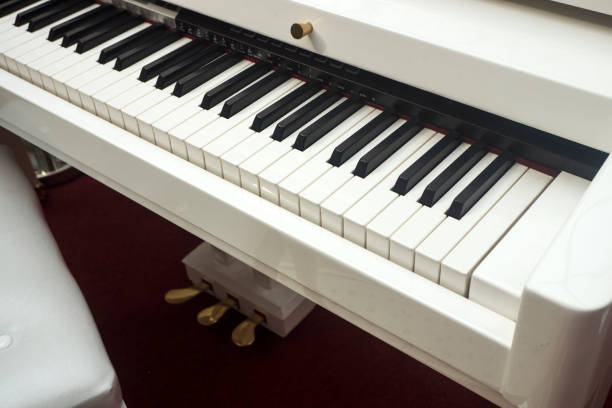The quest to locate Middle C on the piano is a fundamental step in the journey of any pianist. This note serves as a central landmark on the 88 keys of the piano, and its position is crucial for understanding and navigating the keyboard. Whether you are a beginner taking your first steps in music education or a seasoned musician revisiting the basics, the significance of Middle C cannot be overstated.
In this article, “Where is Middle C on Piano,” we provide an in-depth guide to finding this pivotal note. Drawing upon the expertise of professional pianists and music educators, we offer clear, step-by-step instructions that demystify the piano keyboard layout. Our approach is designed not only to help you identify Middle C with ease but also to impart the knowledge of its role in music theory, notation, and instrument orientation.
The value of this content lies in its practical application; it is a foundational piece of knowledge that supports the development of key skills for any piano player. From aligning your fingers with the correct keys to reading sheet music and understanding octaves, Middle C is the starting point from which all these crucial musical elements radiate.
We recognize that the simplicity of this topic belies its importance. That’s why we have meticulously prepared an article that will not only answer the titular question but will also pique your curiosity about the broader aspects of piano playing and music theory. We aim to engage readers with fascinating insights into the history and design of the piano, enhancing your overall appreciation of the instrument.
So, let us guide you to the heart of the piano keyboard, where Middle C awaits. As you delve into this article, be prepared to enrich your musical knowledge and strengthen your piano playing foundation. The discovery of Middle C is just the beginning of a melodious adventure that starts with a single note and expands to the creation of harmonious masterpieces.
Contents
Understanding Keyboard Layout

Piano keyboards consist of white and black keys arranged in repeating patterns called octaves. Each octave contains 7 white keys and 5 black keys. The white keys are known as naturals and the black keys are called accidentals.
The naturals are named A, B, C, D, E, F, and G, repeating in alphabetical order as you move up and down the keyboard. The accidentals (sharps and flats) occur between certain naturals.
Knowing this pattern helps locate Middle C. Let’s learn how,
Locating Middle C
A. On an 88-Key Piano
Most full-size pianos have 88 keys spanning 7 complete octaves plus a few extra keys.
To find Middle C:
- Look at the center of the keyboard
- Find the C key closest to the middle
- This is usually the 4th C key from the left side
By orienting yourself to Middle C, you can then identify all other notes on the piano.
B. On Keyboards with Fewer Keys
For keyboards with less than 88 keys, use these methods to locate Middle C:
Count C keys from the left side:
| Keyboard Size | Middle C Location |
| 76 keys | 4th C from left |
| 61 keys | 3rd C from left |
| 49 keys | 3rd C from left |
C. Tricks for Remembering Middle C
The black key groups can cause confusion between the C and F keys.
Try these memory tricks:
- C ends a group of 2 black keys, F ends a group of 3.
- C comes before F alphabetically and 2 comes before 3 numerically.
- Remember “Cab Fare” – C begins the “Cab” group, F begins the “Fare” group.
Real-World Application
Once you’ve found Middle C, you can use it to find any other notes on the keyboard. This helps piano students navigate and read sheet music using Middle C as an anchor point.
Practice Exercise (Optional)
Let’s reinforce Middle C’s location. Try these activities:
- Play Middle C with different fingers.
- Identify Middle C on a picture of a keyboard.
- Name the notes immediately to the left and right of Middle C.
Alternative Keyboard Layouts
Some digital keyboards may have non-standard layouts. Others use octave shift buttons that move Middle C. Just remember the general rule – Middle C is nearest the middle.
Conclusion
Locating Middle C is an essential piano skill, especially for beginners. By understanding keyboard patterns and using memory aids, you can reliably find Middle C regardless of the keyboard size. This reference point will help orient you on the piano and enable sight reading. So go ahead, find that Middle C and let the music flow.

Trayce served as a grassroots leader and activist in Texas as President of Dallas and Texas Eagle Forum.
Trayce is Mom Caucus Member, Texas Conservative Mamas, Texas Conservative Grassroots Coalition Leader, and Grassroots America Champion of Freedom Honoree.
She currently serves as the Eagle Forum National Issues Chair on Human Trafficking.
Trayce received a Bachelor’s Degree in Marketing from Texas A&M
Currently, she homeschools her youngest child age 13 and graduated her six oldest children, ages 31 to 19.







